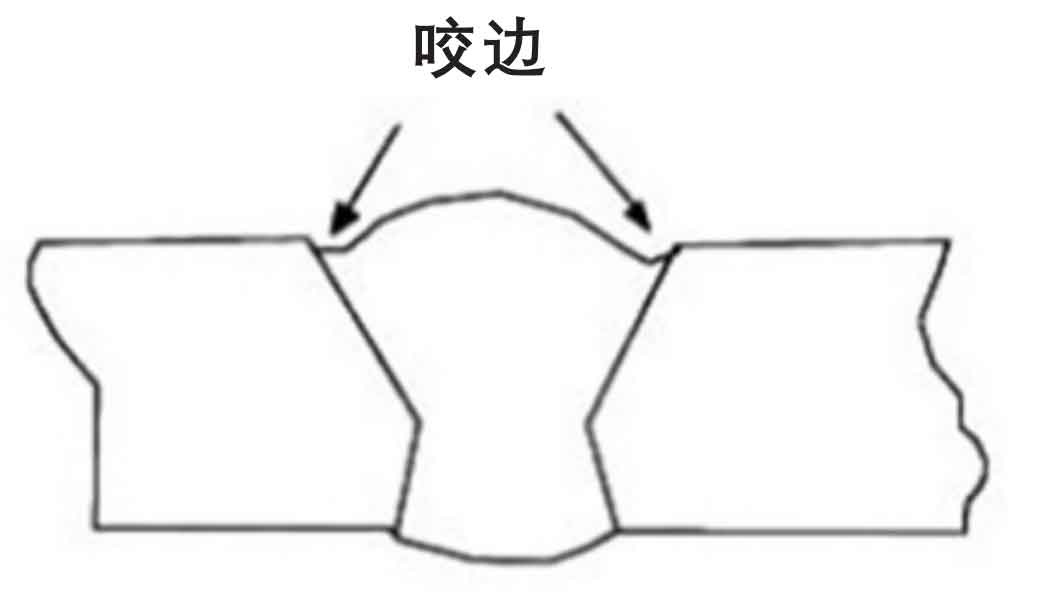Preventing Weld Undercut Demystified: Strategies for Success
Preventing Weld Undercut Demystified: Strategies for Success
Blog Article
Mastering the Art of Welding: Exactly How to Prevent Undercut Welding Issues for Flawless Construction Outcomes
Performance and accuracy are critical worldwide of welding, where also the smallest blemish can jeopardize the architectural stability of a produced item. One usual difficulty that welders face is damaging, an issue that can lead and weaken a weld joint to pricey rework. By recognizing the source of undercut welding and executing efficient techniques to stop it, welders can raise their craft to brand-new levels of quality (Preventing weld undercut). In the quest of remarkable manufacture results, understanding the art of welding to stay clear of undercut concerns is not just an ability yet a need for those making every effort for perfection in their job.
Understanding Undercut Welding

To avoid undercut welding, welders ought to ensure proper welding parameters, such as adjusting the current, voltage, travel speed, and preserving the appropriate electrode angle. Furthermore, utilizing the proper welding method for the particular joint arrangement is vital. Utilizing weaving movements or backstepping strategies can assist make sure correct weld metal deposition and reduce the probability of undercut formation. Routine assessment of welds during and after the welding procedure is likewise vital to capture any undercut early and make needed modifications to avoid additional problems. Preventing weld undercut. By recognizing the root causes of undercut welding and executing preventative actions, welders can attain premium, structurally sound welds.
Sources Of Undercut in Welding
Recognizing the aspects that add to damage in welding is vital for welders to create high-grade, structurally audio welds. When the weld metal does not correctly fill up the groove formed between the base metal and the previously transferred weld steel, undercutting takes place. Numerous factors can bring about undercut in welding. One usual reason is too much warmth input. Welding at heats for extended periods can cause the base steel thawing greater than preferred, leading to undercut. Insufficient welding existing or incorrect welding speed can additionally contribute to damage. Not enough current may not provide enough warmth to melt the base and filler steels properly, while excessive rate can protect against proper combination, causing undercut. In addition, improper electrode angles or inaccurate torch manipulation strategies can create areas of low weld steel deposition, advertising undercut. Understanding these causes and carrying out appropriate welding strategies can help stop undercutting problems, guaranteeing resilient and strong welds.
Techniques to avoid Undercutting

To minimize like this the danger of undercutting in welding, welders can use strategic welding techniques focused on enhancing the quality and integrity of the weld joints. One efficient technique is to adjust the welding parameters, such as voltage, current, and take a trip speed, to make certain correct warm input and deposition. Preserving an appropriate electrode angle and ensuring regular travel rate can likewise aid prevent undercut. In addition, using the appropriate welding method for the specific joint setup, such as weave or stringer beads, can add to decreasing damaging. Preventing weld undercut.
Additionally, appropriate joint prep work, including ensuring clean base products devoid of impurities and making use of the suitable welding consumables, is critical in preventing undercut problems. Utilizing back-step welding methods and controlling the weld grain account can likewise help disperse warmth evenly and reduce the threat of undercut. Normal examination of the weld joint throughout and after welding, along with implementing quality control steps, can aid in identifying and dealing with undercutting problems immediately. By carrying out these methods diligently, welders can attain remarkable construction results with marginal undercut defects.
Importance of Proper Welding Criteria
Selecting and preserving appropriate informative post welding parameters is necessary for accomplishing effective welds with very little issues. Welding specifications refer to variables such as voltage, current, take a trip rate, electrode angle, and shielding gas circulation rate that directly influence the welding process. These specifications must be thoroughly adjusted based upon the kind of material being bonded, its density, and the welding method used.
Correct welding criteria guarantee the best amount of heat is put on melt the base metals and filler material evenly. If the criteria are set expensive, it can bring about excessive heat input, causing spatter, burn-through, or distortion. On the other hand, if the criteria are also low, incomplete combination, absence of penetration, or undercutting might occur.
Quality Guarantee in Welding Workflow

Verdict
Finally, grasping the art of welding calls for a comprehensive understanding of undercut welding, its reasons, and techniques to stop it. By guaranteeing proper welding parameters and applying quality control techniques, remarkable construction outcomes can be accomplished. It is necessary for welders to continually pursue excellence in their welding procedures to stay clear of undercut concerns and generate high-quality welds.
Undercut welding, a typical issue in welding processes, takes place when the weld steel doesn't appropriately fill up the groove and leaves a groove or anxiety along the welded joint.To prevent undercut welding, welders ought to guarantee appropriate welding parameters, such as adjusting the existing, voltage, traveling speed, and keeping the correct electrode angle. Poor welding inaccurate or existing welding rate can additionally contribute to damage.To reduce the risk of undercutting in welding, welders can use critical welding strategies aimed at boosting the high quality and honesty of the weld joints.In verdict, mastering the art of welding calls for an extensive understanding of undercut welding, its visit the website reasons, and methods to stop it.
Report this page